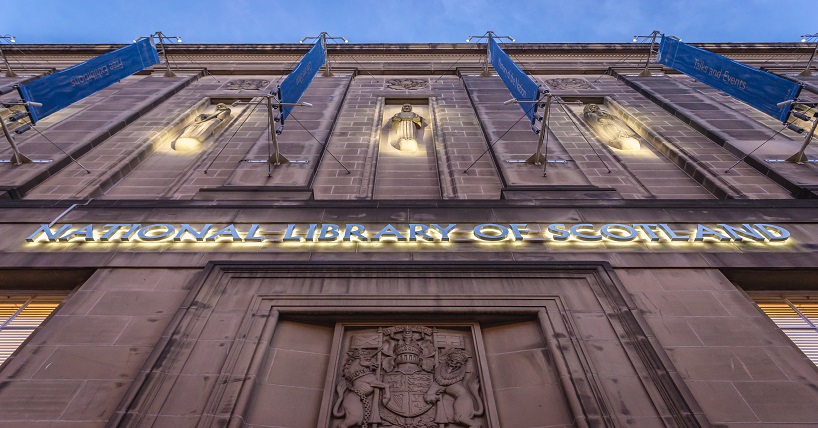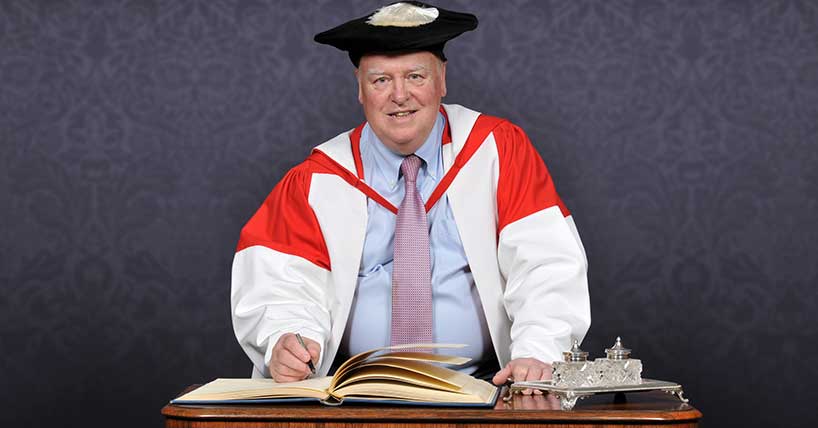Encountering political texts
17th century political texts led the way for social media influencers
Published on: 11 December 2023
A new exhibition will highlight the ways that early political texts tried to influence readers and incite them into action - and the similarities with how political messages are communicated today.
The exhibition, which starts at the National Library of Scotland this week, is the culmination of the ‘Experiencing Political Texts’ research study led by Professor Rachel Hammersley and Dr Katie East, which explored political texts published between 1500 and 1800.
The project brought together historians and digital humanities specialists, members of the public, and librarians and archivists, to discuss issues such as whether the documents were credible and reliable sources of information given the explosion in printing technology at the time, and what this said about an author’s authority.
Participants also talked about the methods by which political ideas were communicated, and how there were some similarities between concerns over modern social media influencers and bloggers and the criticisms of the discussions in coffee houses in the 17th century.
Professor Hammersley explained: “Innovation in how political ideas are presented – and consumed - is not new and the early modern period saw much experimentation as authors sought not just to inform audiences but to entertain and often stimulate them into taking action.
“In many ways - and as our research highlighted - concerns about the credibility of some social media influencers today are not dissimilar to early criticisms of coffee houses and those who used them as venues for platforming their views despite not having any perceived knowledge of the subject.
“I hope visitors to the exhibition will think about how we experience different formats, how it influences our interpretation of the information the texts contain, and the questions it raises about how political ideas and news are communicated today.”
The exhibition will showcase original editions of early modern political texts and compare them with modern print and digital versions to encourage visitors to think about the ways they are exposed to political messages today and how attitudes towards the content can be influenced by how they are experienced.
Previous research has traditionally focused on what historical political texts said rather than how information was delivered and engaged with. The ‘Experiencing Political Texts’ project aimed to better understand how early modern political texts could be read, and presented to modern audiences - as well as the similarities and differences in how modern political information is disseminated and stimulates calls to action.
Not all early modern political texts were lengthy books - a wide range of different techniques were used in the 17th and 18th centuries, with many authors using humour, satire and fiction as well as formats such as plays and songs – often set to well-known tunes and the words displayed on large posters in public places.
The period also saw the increasing use of newsbooks (the forerunner of the modern newspaper), and pamphlets (which often focussed on a single issue), both of which were becoming cheaper as a result of innovations in printing.This allowed larger numbers of people, even those with limited literacy, to engage with political ideas.
Some texts were also specifically designed to be read aloud at venues such as coffee houses. If someone disagreed with something they’d heard or read in a pamphlet they could just print their own – often, regardless of their expertise on the subject.
This led to criticisms at the time of some authors imposing their views on others to serve their own self-interest.
For modern audiences taking part in the study, this raised the issue of who had the power and authority over what information was shared, and the parallels with modern media ownership.
One example of how authors in the 17th and 18th centuries dealt with this was by varying the price and availability according to who the intended audience was. In one notable case, leading radical, Newcastle-born Thomas Spence who sought to share his political ideas with a wide audience not only through published pamphlets but also tokens, songs, and even graffiti.
Periodical publications were also one of the success stories of the age and the number of titles increased rapidly. Their regular format, short articles and relatively low cost made them accessible to a wider audience than just the political elite – including women and tradesmen. While part of their purpose was to entertain, the content often included a moral, political or philosophical dimension and readers would regularly keep or share copies.
The ‘Encountering Political Texts’ exhibition takes place at the National Library of Scotland, George IV Bridge, Edinburgh EH1 1EW until 18 April 2024. The exhibition is open during the following times: Monday and Tuesday 9:30am to 7pm; Wednesday 10am to 7pm; Thursday 9:30am to 7pm; Friday 9:30am to 5pm; Saturday 9:30am to 5pm, closed on Sunday. For more information visit www.nls.uk/
For more information on the Experiencing Political Texts project, read Professor Hammersley’s blog at www.rachelhammersley.com/new-blog/




